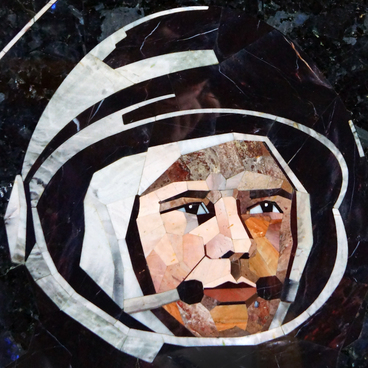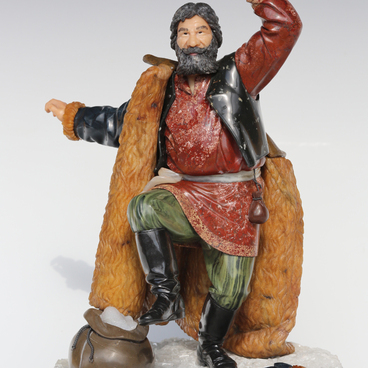In the late 19th and early 20th centuries, Easter egg miniature pendants came into fashion. They were usually worn on gold chains. Such pendants were often presented to girls from a very young age, and over time, they built up a large collection. Traditionally, the pendants were attached to sophisticated multi-row necklaces and worn for celebrations.
The main manufacturer of such jewelry in Russia was the jewelry firm of Carl Fabergé. Since 1885, it had the title of Supplier to the Imperial Court — one of the most honorable titles in the 19th century. Famous St. Petersburg jewelers of that time worked at the Fabergé firm: Julius Rappoport, Henrik Wigström, Mikhail Perkhin. Valentin Serov and Alexander Benois created sketches for the items.
Carl Fabergé's company produced a variety of miniature Easter eggs in various finishes. One of the most popular methods of adorning such eggs was guilloché enamel. The silver base was decorated with an engraved pattern in the form of straight or wavy lines, ears, nets. A layer of translucent colored enamel was applied on top, through which the relief surface of the metal can be seen. Then the egg was polished; thin gilded garlands or gemstone inserts were attached to it. Sometimes jewelers complemented the items with a ladybug or a diamond bow.
The Museum of Stone-Cutting and Jewelry Art History presents a collection of Easter eggs, which previously belonged to Lydia Mitkevich-Zholtko. Her father, Artur Mitkevich-Zholtko, was in charge of the jewelry department of the Moscow branch of the Fabergé firm from 1902 to 1917. He gave these pendants to his daughter. In 1993, Lydia Mitkevich-Zholtko donated nine pendants to the museum, and in 2014, another part of the collection was donated by her relatives. In total, the museum houses 39 such jewelry pieces, some of them are kept in the funds, others are displayed in different showcases.
On one of the pendants, one can see the Fabergé brand “CF”. Others show the marks of the masters: “AA” — Andrey Adler, “FA” — Feodor Afanasiev. Many pendants do not have metal pins with rings for fastening, so it was not possible to establish who was their creator.
In addition to guilloché pendants, the museum collection includes Easter eggs made of lazurite and purpurin — synthetic brownish-red glass with an admixture of copper. One piece is made of mother of pearl.
The main manufacturer of such jewelry in Russia was the jewelry firm of Carl Fabergé. Since 1885, it had the title of Supplier to the Imperial Court — one of the most honorable titles in the 19th century. Famous St. Petersburg jewelers of that time worked at the Fabergé firm: Julius Rappoport, Henrik Wigström, Mikhail Perkhin. Valentin Serov and Alexander Benois created sketches for the items.
Carl Fabergé's company produced a variety of miniature Easter eggs in various finishes. One of the most popular methods of adorning such eggs was guilloché enamel. The silver base was decorated with an engraved pattern in the form of straight or wavy lines, ears, nets. A layer of translucent colored enamel was applied on top, through which the relief surface of the metal can be seen. Then the egg was polished; thin gilded garlands or gemstone inserts were attached to it. Sometimes jewelers complemented the items with a ladybug or a diamond bow.
The Museum of Stone-Cutting and Jewelry Art History presents a collection of Easter eggs, which previously belonged to Lydia Mitkevich-Zholtko. Her father, Artur Mitkevich-Zholtko, was in charge of the jewelry department of the Moscow branch of the Fabergé firm from 1902 to 1917. He gave these pendants to his daughter. In 1993, Lydia Mitkevich-Zholtko donated nine pendants to the museum, and in 2014, another part of the collection was donated by her relatives. In total, the museum houses 39 such jewelry pieces, some of them are kept in the funds, others are displayed in different showcases.
On one of the pendants, one can see the Fabergé brand “CF”. Others show the marks of the masters: “AA” — Andrey Adler, “FA” — Feodor Afanasiev. Many pendants do not have metal pins with rings for fastening, so it was not possible to establish who was their creator.
In addition to guilloché pendants, the museum collection includes Easter eggs made of lazurite and purpurin — synthetic brownish-red glass with an admixture of copper. One piece is made of mother of pearl.



